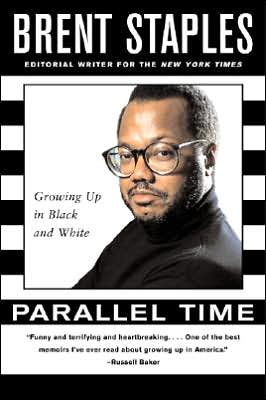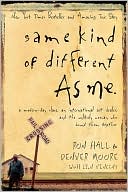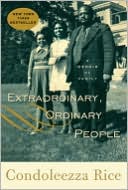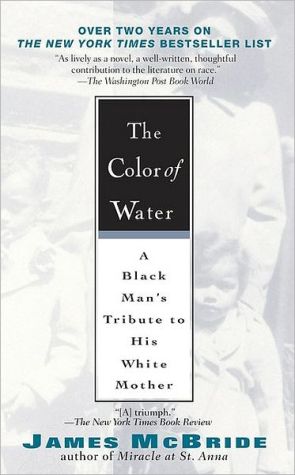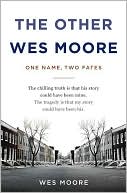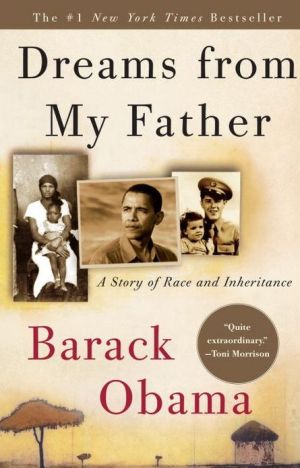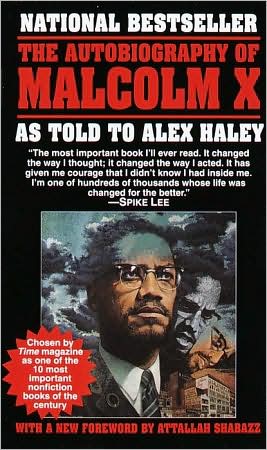Parallel Time: Growing up in Black and White
In this evocative memoir, Brent Staples poses some compelling questions: Where does the family end the self begin? What do we owe our families and what do we owe ourselves? What part of the past is a gift and what part a shackle?\ As the oldest son among nine children, Brent grew up in a small industrial town near Philadelphia. Scholarship opportunities pulled him out of the black world where he had grown up into a world largely defined by whites. Meanwhile, as the industries that supported...
Search in google:
In this evocative memoir, Brent Staples poses some compelling questions: Where does the family end the self begin? What do we owe our families and what do we owe ourselves? What part of the past is a gift and what part a shackle?As the oldest son among nine children, Brent grew up in a small industrial town near Philadelphia. Scholarship opportunities pulled him out of the black world where he had grown up into a world largely defined by whites. Meanwhile, as the industries that supported his hometown failed, and drug dealing rushed in to fill the economic void, news of arrests and premature deaths among Brent's childhood friends underscored his precarious perch in a mostly white environment. The death of his younger brother — a cocaine dealer murdered by one of his "clients" — propelled Brent into a reconsideration of his childhood that offers vivid portraits of family values that supported, pressures that tore apart, and the appeal and pain of living as an adult in a world that was literally and figuratively miles away from the one he knew as a child.New York Times Book ReviewPoignant...rewarding...vividly realized...A writer of edifying elegance...Staples reveals a resolutely distinct voice as he negotiates the treacherous shoals of racial identity in American culture.
The Coroner'sPhotographs\ My brother's body lies dead and naked on a stainless steel slab. At his head stands a tall arched spigot that, with tap handles mimicking wings, easily suggests a swan in mourning. His head is squarish and overlarge. (This, when he was a toddler, made him seem top-heavy and unsteady on his feet.) His widow's peak is common among the men in my family, though this one is more dramatic than most. An inverted pyramid, it begins high above the temples and falls steeply to an apex in the boxy forehead, over the heart-shaped face. A triangle into a box over a heart. His eyes (closed here) were big and dark and glittery; they drew you into his sadness when he cried. The lips are ajar as always, but the picture is taken from such an angle that it misses a crucial detail: the left front tooth tucked partly beyond the right one. I need this detail to see my brother full. I paint it in from memory.\ A horrendous wound runs the length of the abdomen, from the sternum all the way to the pubic mound. The wound resembles a mouth whose lips are pouting and bloody. Massive staplelike clamps are gouged into these lips at regular intervals along the abdomen. This is a surgeon's incision. The surgeon was presented with a patient shot six times with a large-caliber handgun. Sensing the carnage that lay within, he achieved the largest possible opening and worked frantically trying to save my brother's life. He tied off shattered vessels, resectioned the small intestine, repaired a bullet track on the liver, then backed out. The closing would have required two pairs of hands. An assistant would have gripped the two sides of the wound and drawn themtogether while a second person cut in the clamps. The pulling together has made my brother's skin into a corset that crushes in on the abdomen from all sides. The pelvic bones jut up through the skin. The back is abnormally arched from the tension. The wound strains at the clamps, threatening to rip itself open. The surgeon worked all night and emerged from surgery gaunt, his greens darkened with sweat. "I tied off everything I could," he said, and then he wept at the savagery and the waste.\ This is the body of Blake Melvin Staples, the seventh of my family's nine children, the third of my four brothers, born ten years after me. I know his contours well. I bathed and diapered him when he was a baby and studied his features as he grew. He is the smallest of the brothers, but is built in the same manner: short torso but long arms and legs; a more than ample behind set high on the back; knocking knees; big feet that tend to flat. The second toe is also a signature. It curls softly in an extended arc and rises above the others in a way that's unique to us. His feelings are mine as well. Cold: The sensation moves from my eyes to my shoulder blades to my bare ass as I feel him naked on the steel. I envision the reflex that would run through his body, hear the sharp breath he would draw when the steel met his skin. Below the familiar feet a drain awaits the blood that will flow from this autopsy.\ The medical examiner took this picture and several others on February 13, 1984, at 9:45 A.M. The camera's flash is visible everywhere: on the pale-green tiles of the surrounding walls, on thegleaming neck of the spigot, on the stainless steel of the slab, on the bloody lips of the wound.\ The coroner's report begins with a terse narrative summary: "The deceased, twenty-two-year-old Negro male, was allegedly shot by another person on the premises of a night club as a result of a 'long standing quarrel.' He sustained multiple gunshot wounds of the abdomen and legs and expired during surgery."\ Blake was a drug dealer; he was known for carrying guns and for using them. His killer, Mark McGeorge, was a former customer and cocaine addict. At the trial Mark's lawyer described the shooting as a gunfight in which Blake was beaten to the draw. This was doubtful. Blake was shot six times: three times in the back. No weapon was found on or near his body. Blake's gunbearer testified that my brother was unarmed when Mark ambushed and gunned him down. But a gunbearer is not a plausible witness. A drug dealer known for shooting a rival in plain public view gets no sympathy from a jury. The jury turned back the prosecution's request for a conviction of murder in the first degree. Mark was found guilty of second-degree murder and sentenced to seven years in jail. Five years for the murder. Two years for using the gun.\ Blake is said to have cried out for his life as he lay on the ground. "Please don't shoot me no more. I don't want to die." "Please don't shoot me no more. I don't want to die." His voice had a touch of that dullness one hears from the deaf, 'a result of ear infections he suffered as a child. The ear openings had narrowed to the size of pinholes. He tilted his head woefully from side to side trying to pour out the pain. His vowels were locked high in histhroat, behind his nose. This voice kept him a baby to me. This is the voice in which he would have pleaded for his life.\ The coroner dissects the body, organ by organ:\ Heart: 300 grams. No valve or chamber lesions. Coronary arteries show no pathologic changes.\ Lungs: 900 grams combined. Moderate congestion. Tracheobronchial and arterial systems are not remarkable.\ Liver: 1950 grams. There is a sutured bullet track at the interlobar sulcus and anterior portion of the right hepatic lobe. There has been moderate subcapsular and intraparenchymal hemorrhage.\ Spleen: 150 grams. No pathologic changes.\ Kidneys: 300 grams combined. No pathologic changes.\ Adrenals: No pathologic changes.\ Pancreas: No pathologic changes.\ GI Tract: The stomach is empty. Portions of the small bowel have been resected, along with portions of the omentum. The bowel surface is dusky reddish-brown, but does not appear gangrenous.\ Urinary Bladder: Empty.\ Neck Organs: Intact. No airway obstructions.\ Brain: 1490 grams. Sagittal and serial coronal sections show no discrete lesions or evidence of injury.\ Skull: Intact.\ Vertebrae: Intact.\ Ribs: Intact.\ Pelvis: There is a chip fracture of the left pubic ramus, and there is also fracturing of the right pubic ramus. There is extensive fracturing of the left femur, and there is a through-and-through bullet wound of the right femur just below the hip joint...
\ Chicago Sun-TimesRefreshing...ironic...affecting....a superbly crafted memoir.\ \ \ \ \ Chicago TribuneAn elegant, affecting memoir....Staples has turned his alienation to powerful account, bringing us living proof that this society cannot afford to bet its future on the laws of chance.\ \ \ Entertainment WeeklyA painfully honest account of the conflicts and choices caused by growing up and away from one's roots. Staples's book is less an autobiography than a meditation on a universal question: what makes us who we are?\ \ \ \ \ New York Times Book ReviewPoignant...rewarding...vividly realized...A writer of edifying elegance...Staples reveals a resolutely distinct voice as he negotiates the treacherous shoals of racial identity in American culture.\ \ \ \ \ Philadelphia InquirerA powerful, personal memoir from an extraordinary storyteller....The reader is priviliged to share the inner turmoil, and the startling eloquence, of a man bent on saving himself.\ \ \ \ \ Publishers WeeklyIn spare, affecting prose, Staples, a member of the editorial board of the New York Times , here recalls his hardscrabble boyhood in the mostly black world of Chester, Pa., and the pains and privileges of later joining a middle-class, whiter milieu. The oldest son among nine children, the author feared his violent alcoholic father but gained a nascent writer's sensibility from the kitchen rhythms of his mother and her friends. As if reflecting the dislocations of his 1960s youth, Staples sketches numerous fragments: his older sister slipping toward delinquency, the challenge by bullies at a new school, the untimely shooting death of his cousin. With wry hindsight he recalls his Black Power activism before he took advantage of a scholarship to a local college and won a graduate scholarship to the University of Chicago. The book ends with the first success of Staples's journalism career, which is paralleled with the death of his drug-dealing brother Blake in 1983. He observes resonantly that chance and complexity, not a simple morality tale, must be factored into any accounting for their divergent paths. (Feb.)\ \ \ \ \ Library JournalStaples forcefully relates a harrowing tale of growing up in a world of violence and uncertainty in the black neighborhoods of Chester, Pennsylvania. Because of his father's drinking problem, rent payments were always in arrears, so his large family was constantly moving from one apartment to another. Schooling was haphazard. Somehow, almost through a fluke, he went on to college, earned an advanced degree, and thus gained entry to a professional world dominated by white people. This book, reflecting his early experiences and his current ambivalence about his loyalties and sense of self, were triggered by the murder of his brother, who had become a drug dealer. Writing in the street language of his youth, he describes some of the strengths of black society before the infiltration of the drug culture. This powerful account is recommended for most collections.-- Carol R. Glatt, VA Medical Ctr. Lib., Philadelphia\ \ \ \ \ School Library JournalYA-The story of a man's journey from his childhood in a mixed-race factory town to a position on the editorial staff of The New York Times. The oldest of nine children born to a hard-drinking man and saintly woman, Staples describes how his early years were marked by frequent moves to avoid eviction, hijinks with neighborhood pals, and a keen sense of observation. In high school, although eligible for college prep courses, he elected the safer bet, commercial studies. A chance meeting with a professor at Penn Morton College, who arranged for his entry into an academic boot camp, expanded his opportunities. Employment in the predominantly white world of journalism followed his advanced degree. Students will empathize with the universal adolescent concerns and experiences, and witness Staples's anger at prejudice he encounters as well as his angst as he strives to understand the world and his place in it.-Barbara Hawkins, Oakton High School, Fairfax, VA\ \
